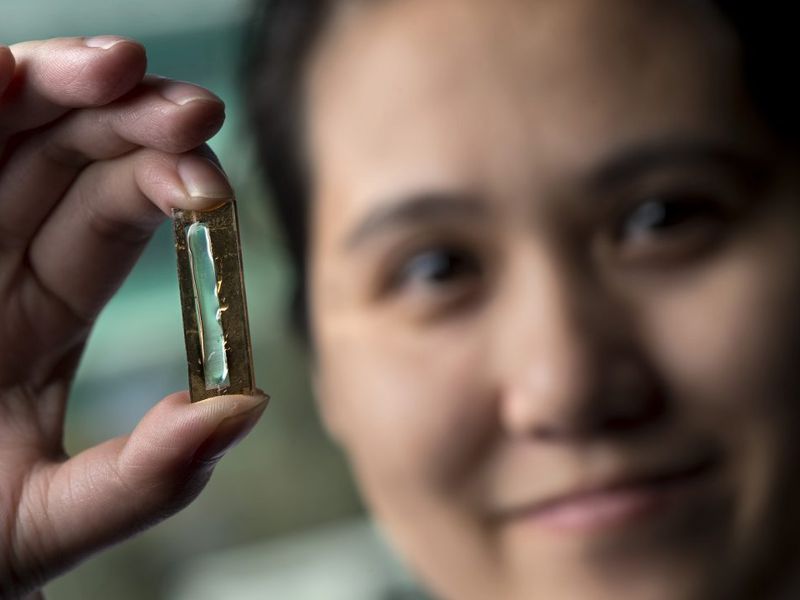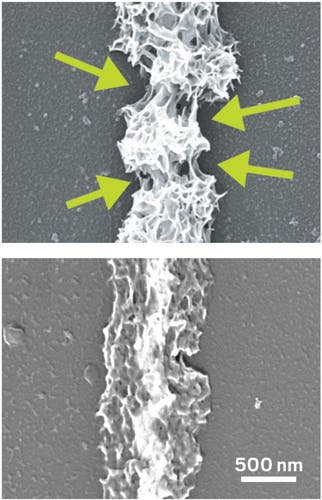
From the pacemaker to stainless steel and Velcro, some of the world’s most useful inventions were made by accident. A nanowire battery might someday make this impressive list, too. Made by accident at the University of California at Irvine while a Ph.D. student was toying with nanowires in the lab, the rechargeable battery could last for decades.
The lithium-ion battery inside your laptop or chromebook is only designed to last 300-500 charge-discharge cycles, or roughly 2-3 years. It all depends on how you use it. For instance, as a general rule of thumb, 5 to 10 shallow discharge cycles are equal to one full discharge cycle. Partial-discharge cycles are actually recommended to boost battery life, while you should avoid as much as possible completely discharging the battery.
Suffice to say, no matter how careful you are, that Li-ion battery will eventually stop charging. Most will end up in landfills, wasting a lot of resources that have gone into the mining of lithium and the manufacturing of the battery, as well as resulting in environmental pollution.
This is why scientists are always on the lookout for batteries that can store a decent amount of charge and can withstand a much higher number of cycles while avoiding toxic components or unsustainable manufacturing.
A stroke of genius
One such battery may be a promising nanowire alternative. Funny enough, Mya Le Thai, who in 2016 used to be a P.hD candidate at the University of California at Irvine, made it completely by accident.
Nanowires are tiny conductive wires less than 100 nanometers in diameter with good properties as batteries. But their tiny size makes them extremely fragile, which causes them to fray and crack easily after a number of charging cycles.
One faithful day, Le Thai switched the liquid electrolyte that bathed the nanowire assembly with a gel capacitor. During subsequent tests, she later found, much to her surprise, that the nanowire battery had been cycling through more than 10,000 charges and was still going. A few days later, it was still cycling for more than 30,000 instances. It kept on going for a month.
The gel, which is thick like peanut butter, slowly seeps into the pores of the nanowires made of manganese oxide. This makes them softer, which greatly reduces their fragility.
“If you could get 100,000 cycles out of a lithium-ion battery it might mean you never need to buy two of them,” said Reginald Penner, chair of the university’s chemistry department. “We’re talking about a lifetime of 20 years, maybe even longer than that.”

Le Thai and others in Penner’s team are still experimenting with gel-wrapped nanowire batteries. Meanwhile, the market is betting big on them due to their fast charging and much longer lifetime, compared to lithium-ion. The nanowire battery market is set to grow from $53 million in 2021 to $243 million by 2026, by one estimate. Most of this growth will be fueled by the high adoption rate of electric vehicles in the coming 4-5 years.






